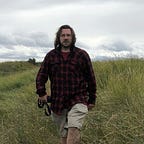“Society of the Spectacle” — Paragraph 2
In this article, I will look at the second paragraph of Guy Debord’s “Society of the Spectacle”, relating it to the first paragraph and my own interpretation. Debord writes:
The images detached from every aspect of life fuse in a common stream in which the unity of this life can no longer be reestablished.
Debord is clarifying what he means by things that are “directly lived”. It is precient that he uses the word ‘stream’ to depict the endless series of images that are detached from our lives. We stream Netflix, Youtube, Spotify, podcasts. These common streams consist of images detached from our lives, from the pragmatic reality of sitting on a sofa staring at a flickering screen, sitting on the toilet, or standing on a bus. A part of ourself is elsewhere when we partake in viewing this spectacle, the unity is broken.
Reality considered partially unfolds, in its own general unity, as a pseudo-world apart, an object of mere contemplation.
Our real lives continue to unfold, of course. Birds still sing; waves still crash. But this becomes a pseudo world for the modern person. We are aware of it often only as spectacle, even when confronted with it in real life, we lift our phones to take a photo or video of it. It is an object of contemplation rather than of immediate life. We seek to spectacularize that which exists outside the common stream of images in our life.
The specialization of images of the world is completed in the world of the autonomous image, where the liar has lied to himself.
One might consider the advertisement a form of an “autonomous image”. Giant billboards looming over city squares appear and change with no consent from the viewer. They are thrust into our lives with an apparent form of autonomy. They are often lies, which we tell ourselves. Advertisers unleash these autonomous images into the internet and public spaces, and then are subjected to them as well. The insane number of “images of the world” are carefully specialized. It’s easy to conjure up the idea of a selfie vs. a car ad. Both are lies and both are specialized.
The spectacle in general, as the concrete inversion of life, is the autonomous movement of the non-living.
This is an interesting way to end the paragraph. Debord indicates that the spectacle we are all immersed in is not only a place where we “are not”, but also that it is devoid of life entirely. The autonomous movement of the non-living has become a goal and fear of many. Endless speculation on the advent of ‘artificial intelligence’ has grown mundane, but it is interesting to consider the connection between Feuerbach’s sacred illusion and the autonomous movement of the non-living spectacle. Is the obsession with AI connected to our veneration of the illusion?
The “concrete inversion of life” takes on disturbing meaning if one considers the loss of biomass and the ongoing extinction of species around the world, even as we build more and more servers to house the common stream of images we produce. We labour on self-driving cars while exterminating coral reefs. We bring movement to the non-living at the expense of real life.
Debord has begun to clarify what he means by ‘direct living’, through the further explanation of what it is not. In addition he suggests that the spectacle cannot be considered a mere addition to the fabric of life, but that it stands in direct opposition to life. The more we are wrapped up in spectacle, the more we split ourselves into a pseudo-world, a lifeless state.
One could argue that the North American lawn serves as a metaphor for this dynamic. The lawn has grown in proportion to the prevalence of the spectacle. Its primary purpose is aesthetic. Most lawns are rarely lived on through sport or relaxation, but rather exist as ornaments to communicate class-based status. Modern lawns consume vast amounts of pesticides and fertilizer. They cover an area larger than most food crops. They are ecological deserts, or non-living spectacles apart from living environments.
The relationship between the lawn and spectacle from a car window or a real estate ad is the same. We view lawns as objects of mere contemplation. This specialized image is autonomous. The culture of the lawn is so pervasive that it is often not even a choice as whether one can choose to have a lawn or not in many neighbourhoods. The lie of the lawn — that it is a natural environment, that it symbolizes wealth or leisure, that it is the only use for the space, that it is alive — is something we tell ourselves. It is no coincidence that plastic imitation lawns have grown popular in Metro Vancouver, presenting an even more idealized version of the lawn, a more thorough inversion of life. If ‘weeds’ are a profane to us, as Feuerbach’s quote would indicate, then artificial laws is a sacred illusion. Better the lie.
One doesn’t have to think hard to consider this concept through the lens of the political. Debord’s is laying the foundation for understanding the basic norms of our Society of the Spectacle.
